Occupational Environment Monitoring at Coal-Fired Thermal Power Factory
99,000 ₫
Note: The above price is calculated per sample and may vary depending on the area of the environment to be monitored and market fluctuations. For more accurate pricing support, please refer to the price list or contact our consulting staff directly.
Monitoring the environment of a coal-fired thermal power factory is a session for collecting, analyzing, and evaluating workplace factors that may be harmful to workers’ health.
Table of Contents
Toggle1. Overview of Coal-Fired Thermal Power Factories
a. What is a Coal-Fired Thermal Power Factory?
A factory that uses coal as the main fuel is called a coal-fired thermal power factory. The operation of this type of factory begins with burning coal to generate heat, which is then used to convert water into steam. The steam creates pressure to rotate a turbine, which then generates electricity through a generator. Coal-fired thermal power factories have a high electricity production capacity and are widely used globally.
Although coal-fired thermal power factories can provide a stable and large source of electricity, they also have limitations and negative environmental impacts. The coal combustion process produces a large amount of thermal emissions, including gases such as carbon dioxide (CO2) and other pollutants like sulfur dioxide (SO2) and nitrogen oxides (NOx). These substances can contribute to global warming and cause air and water pollution.
Due to these environmental issues and the negative impacts of coal power, many countries have shifted to using cleaner and renewable energy sources, such as solar, wind, hydroelectric, and nuclear energy. Advanced technologies such as emission recovery and treatment, as well as the use of lignite or gasified coal, are also applied to reduce the environmental impact of coal-fired thermal power factories.

b. Production stages in a coal-fired thermal power factory
A typical coal-fired thermal power factory includes the following production stages:
- Coal mining: First, coal is extracted from mines. This includes digging and transporting coal from underground to the surface.
- Coal processing: The mined coal is processed to remove impurities and increase carbon concentration. Processing may include crushing, screening, washing, and recovering by-products.
- Coal combustion: In the factory, coal is burned in a furnace to produce heat. This combustion process generates thermal energy and flue gases.
- Heat converts water to steam: Heat from coal combustion is used to convert water into steam. Water in the circulation system is heated in the boiler to produce high-pressure steam.
- Turbine rotation: Steam generated from the heated water is used to rotate a turbine. The turbine produces pressure and rotational motion, which is converted into electrical energy through a generator.
- Generator: The energy from turbine rotation is converted into electricity by the generator. The generator uses the turbine’s power to produce electricity.
- Cooling system: Electricity generation produces heat, requiring a cooling system to reduce the temperature of water in the circulation system. This system typically uses fresh water or air to cool the water and prevent overheating.

c. Machinery used in coal-fired thermal power factories
In coal-fired thermal power factories, various machinery and equipment are used to perform production stages and operate the system. Some commonly used machinery includes:
- Coal furnace: The furnace is where coal is burned to produce heat. It usually includes combustion systems, coal feeding systems, fans, and control systems.
- Boiler: The boiler converts water into steam using heat from coal combustion. It typically includes water pipes, tanks, heat exchangers, and pressure and temperature management systems.
- Steam turbine: Steam from the boiler is used to rotate the steam turbine. The turbine converts thermal energy into mechanical energy, producing rotational motion.
- Generator: The generator converts mechanical energy from the turbine into electrical energy. It includes components such as rotor, stator, regulators, and controllers.
- Cooling system: The cooling system is used to cool water during production. This may include pumps, cooling devices, and control systems.
- Control and monitoring system: Coal-fired thermal power factories use control and monitoring systems to manage production processes and ensure safe and efficient operations. Equipment includes PLC (Programmable Logic Controller), SCADA (Supervisory Control and Data Acquisition), and monitoring and alarm systems.
- Emission control system: To reduce environmental impact, systems such as dust filters, flue gas treatment units, and pollution control systems are used.

d. Occupational diseases for workers in coal-fired thermal power factories
Workers in coal-fired thermal power factories may be exposed to certain factors that can cause occupational diseases. Some common occupational diseases in this environment include:
- Coal dust lung diseases: Workers exposed to coal dust during mining, processing, and combustion may develop respiratory issues such as pneumoconiosis, coal worker’s pneumoconiosis, and coal dust-induced obstructive lung disease.
- Respiratory system diseases: Exposure to flue gases and toxic gases from coal combustion may cause chemical pneumonia, bronchitis, and difficulty breathing.
- Skin diseases: Contact with chemicals and irritants can lead to dermatitis, eczema, and other skin problems.
- Musculoskeletal diseases: Physical work such as lifting, pulling, and transporting heavy materials may cause injuries and stress to the musculoskeletal system, including back pain, arthritis, and wrist pain.
- Reproductive and sexual health issues: Exposure to certain chemicals and agents may affect reproductive health and sexual function.

e. Coal-fired thermal power factories in Vietnam
Vietnam currently has several coal-fired thermal power factories across the country. Some notable examples include:
- Mong Duong Power Factory (Mong Duong 1 and Mong Duong 2): Located in Quang Ninh, one of the largest coal power projects in Vietnam. Mong Duong 1 has a capacity of 1,200 MW and Mong Duong 2 has 600 MW.
- Vinh Tan Power Factory (Vinh Tan 2, Vinh Tan 4, and Vinh Tan 4 Extension): Located in Binh Thuan province, an important coal power factory complex. Vinh Tan 2 has a capacity of 1,245 MW, Vinh Tan 4 has 1,200 MW, and Vinh Tan 4 Extension has 600 MW.
- Can Tho Power Factory: Located in Can Tho, with a capacity of 600 MW.
- Quang Ninh Power Factory: Located in Quang Ninh, with a capacity of 600 MW.
- Cam Pha Power Factory: Located in Quang Ninh, with a capacity of 1,200 MW.
- Uong Bi Power Factory: Located in Quang Ninh, with a capacity of 300 MW.
- Song Hau 1 Power Factory: Located in Hau Giang province, using ultra-supercritical coal technology, with a capacity of 1,200 MW.
2. Overview of Occupational Environmental Monitoring Services
a. What is occupational environmental monitoring in coal-fired thermal power factories?
Occupational environmental monitoring (or workplace environmental measurement) in coal-fired thermal power factories is the activity of collecting, evaluating, and analyzing measured indicators of environmental factors in the factory. This is done to implement timely measures, minimize environmental hazards to workers’ health, and prevent occupational diseases. Occupational environmental monitoring is mandatory for coal-fired thermal power factories.
Monitoring plays a crucial role in protecting and promoting workers’ health because workers are the main resource of the enterprise and directly generate profits. Workers who are frequently exposed to hazards exceeding allowable limits can experience health issues and occupational diseases.
REGISTER FOR OCCUPATIONAL ENVIRONMENTAL MONITORING SERVICE
b. Nam Viet’s occupational environmental monitoring program
Nam Viet’s occupational environmental monitoring program was developed by monitoring engineers specializing in occupational safety and environmental protection. With the goal of ensuring health and safety for workers, this program uses modern measurement methods to monitor air quality, water quality, and microclimate, physical, and dust factors in the workplace. This program is essential to ensure a safe working environment and protect workers’ health.
Additionally, Nam Viet’s program plays a significant role in researching and developing new solutions to improve workplace environmental quality. With the dedication and professionalism of monitoring experts, Nam Viet’s exclusive monitoring program is becoming a breakthrough in occupational safety and environmental management in Vietnam.

c. Standardization in workplace environmental measurement procedures
Standardization in Nam Viet’s workplace environmental measurement procedures is crucial to ensure measurement accuracy. To guarantee reliability, the program follows standards and standardized procedures recognized by the Ho Chi Minh City Department of Health. This ensures that collected data can be reliably used for evaluating the factory environment and making decisions to improve workplace conditions for workers’ health.
These standardized procedures also ensure that measurements are conducted by highly qualified monitoring specialists with years of experience, allowing managers and experts to trust Nam Viet’s results and make accurate, valuable decisions for protecting workers and the environment.
By applying standardized measurement procedures, Nam Viet demonstrates its commitment to ensuring a safe working environment, protecting workers’ health, and contributing to improving occupational safety and environmental management in Vietnam.
d. Reporting results of occupational environmental monitoring in coal-fired thermal power factories
Monitoring results are prepared according to Form No. 04, Appendix III issued with Decree 44/2016/ND-CP and prepared in two copies: one sent to the factory where the monitoring service contract is signed, and one retained by the monitoring organization.
The retention period for occupational environmental monitoring results is unlimited as regulated by law.

e. Frequency of occupational environmental monitoring as required by law
According to Clause 2, Article 18, Labor Safety and Hygiene Law 84/2015/QH13, employers must organize occupational environmental monitoring to assess harmful factors at least once a year.
f. Deadline for submitting occupational environmental monitoring reports according to law
The deadline for submission is before December 31 each year. Enterprises of production facilities must submit the monitoring results report to the local Department of Health where the enterprise is headquartered and where employees work.
When there are changes in technology, production processes, or upgrades that may generate new hazards, enterprises must update occupational hygiene records concerning harmful factors requiring monitoring.
g. Penalties for violations of occupational environmental monitoring regulations by employers
According to Article 27 of Decree No. 12/2022/ND-CP dated January 17, 2022, regulating administrative penalties in labor, social insurance, and overseas Vietnamese labor contracts:
- Clause 2: A fine of 2,000,000 – 5,000,000 VND for employers who do not publicly disclose monitoring results to workers at the monitoring site and locations under hazard control immediately after receiving monitoring and assessment results.
- Clause 3: A fine of 20,000,000 – 40,000,000 VND for employers who fail to conduct occupational environmental monitoring to control health hazards as required by law.
- Clause 4: A fine of 40,000,000 – 60,000,000 VND for employers colluding with monitoring organizations to commit fraud in environmental monitoring activities, without reaching the level of criminal liability.
3. Harmful environmental factors for workers in coal-fired thermal power factories
Workers in coal-fired thermal power factories may encounter many harmful environmental factors. Below are some main factors:
- Coal dust: The process of mining, handling, and burning coal in coal-fired thermal power factories generates coal dust. Inhaling coal dust can cause respiratory problems, such as pneumonia and black lung disease.
- Emissions: The coal combustion process produces emissions, including pollutants such as sulfur dioxide (SO2), nitrogen oxides (NOx), volatile organic compounds (VOCs), and other toxic compounds. Long-term exposure to these emissions can cause respiratory issues and overall health problems.
- High temperature: Coal-fired thermal power factories produce high temperatures from coal furnaces and boilers. Workers must operate in high-temperature environments, causing fatigue, exhaustion, and potential health risks.
- Other chemicals: Coal-fired thermal power factories use chemicals such as gasoline, petroleum, and coolants. Long-term exposure to these chemicals can harm the skin, eyes, nervous system, and respiratory system.
- Noise: Machinery and equipment in coal-fired thermal power factories generate high noise levels. Continuous and high-intensity noise can cause hearing problems and stress for workers.
- Other toxic substances: Other agents such as heavy metals (e.g., mercury) and other pollutants may exist in the working environment of coal-fired thermal power factories, posing health risks to workers.
4. Measures to improve the working environment in coal-fired thermal power factories
Improving the working environment in coal-fired thermal power factories is an important factor to protect health and ensure safety for workers. Below are some measures to improve the working environment:
- Coal dust management: Ensure measures are applied to limit coal dust during mining, handling, and burning. This includes using dust extraction systems, filters, and air cleaning processes to reduce exposure to coal dust.
- Emission treatment: Apply effective emission control technologies to reduce the amount of emissions and pollutants released into the environment. Measures include installing emission treatment systems, cooling systems, and emission reduction devices.
- Temperature adjustment and cooling systems: Ensure effective cooling systems and temperature control in coal-fired thermal power factories. Provide cooling equipment, ensure proper ventilation, and guarantee comfort and safety for workers.
- Chemical management: Ensure safe handling of chemicals used in coal-fired thermal power factories. This includes proper storage of chemicals, providing personal protective equipment, and compliance with safety regulations.
- Noise reduction: Apply measures to reduce noise in the factory, including soundproofing, using acoustic materials, providing ear protection, and complying with noise safety standards.
- Training and education: Ensure workers are trained and informed about occupational safety.
- Periodically organize occupational environmental monitoring in factories, collect and analyze harmful factors for workers, and adjust to reduce hazards to prevent occupational diseases.
5. Benefits of regular monitoring in coal-fired thermal power factories
An Toan Nam Viet provides businesses with excellent advantages when using occupational environmental monitoring services according to Decree 44/2016/ND-CP on the management and control of harmful factors in the working environment affecting workers.
- Businesses can proactively control harmful factors in workshops or factories.
- Receive advice and recommendations on measures to reduce harmful factors and improve the quality of the working environment.
- Indirectly protect human resources, the key factor in business development.
- Reduce the impact of occupational diseases on human health, thereby reducing future treatment costs.
- Improved worker health leads to better product quality and production output.
- Comply with labor safety laws, avoiding legal risks.
- Create credibility and professionalism in all aspects, enhancing the company’s brand.
Nam Viet’s environmental monitoring service is a solution to reduce the impact of occupational diseases, contributing to a clean and quality working environment.

REGISTER FOR OCCUPATIONAL ENVIRONMENTAL MONITORING SERVICE
6. National Occupational Environmental Monitoring Center
Occupational Environmental Monitoring Center of Nam Viet is a professional unit specializing in monitoring and measuring the quality of the working environment across all provinces in Vietnam. With a team of experienced monitoring specialists, the center uses modern measurement equipment to ensure accuracy and reliability.
Besides providing monitoring services, the center also assists customers in planning, handling, and tracking occupational environmental issues. With the motto “customer-centered,” the center prioritizes customer satisfaction, meets all customer needs, and commits to providing the best solutions for businesses.
REGISTER FOR OCCUPATIONAL ENVIRONMENTAL MONITORING SERVICE
With investment in technology, equipment, and human resources, Nam Viet’s monitoring center has become one of the most reputable units in occupational environmental monitoring in Ho Chi Minh City with the following objectives:
- We always value brand reputation and the quality of our services.
- We provide customers with the best and most suitable solutions.
- With a team of experienced Masters and Engineers committed to environmental protection and business benefits.
- By joining Nam Viet Environmental Monitoring team, your company will receive professional service from experts in the field of monitoring, along with the best cost advantages.
The occupational environmental monitoring process at Nam Viet includes the following basic steps:
- Before performing monitoring, we ensure all machines and equipment for occupational environmental monitoring are calibrated according to legal regulations.
- Perform the monitoring process in full compliance with the procedure committed to the Department of Health.
- Report occupational environmental monitoring results honestly to the employer.
- If monitoring results show unsafe conditions for workers, Nam Viet will provide solutions, and the enterprise will implement as follows:
- Implement measures to improve working conditions to minimize the impact of harmful factors and prevent occupational diseases.
- Organize health check-ups to detect occupational and work-related diseases early for employees in unsafe working environments.
- Provide material compensation to employees according to labor law regulations.

7. Occupational Environmental Monitoring Pricing
To help businesses perform occupational environmental monitoring professionally and effectively, Nam Viet provides customers with a pricing table for occupational environmental monitoring services that is high-quality and reasonably priced.
- Our pricing table provides detailed information on the costs of the monitoring services we offer, including costs related to travel, measurement, analysis, and reporting. Customers can be assured of the accuracy and reliability of the monitoring results we provide.
- We commit to providing competitive and reasonable prices in the market and are always ready to answer any questions about monitoring services quickly and professionally.
- With Nam Viet’s pricing table, customers can easily choose service packages suitable for their needs. We are committed to providing the highest customer satisfaction with professional service quality.
No comments yet

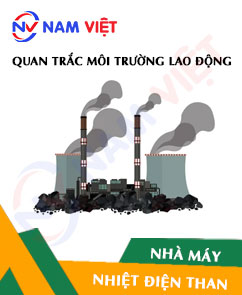
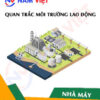
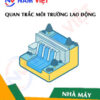

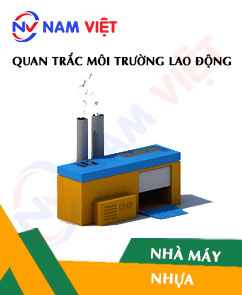
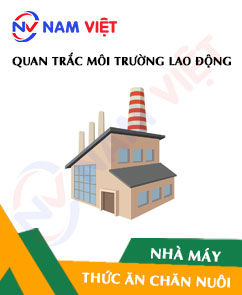
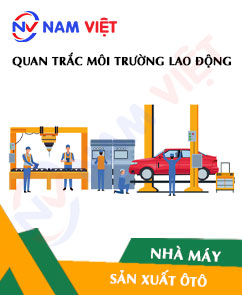
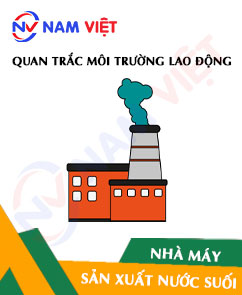
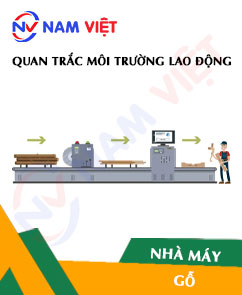
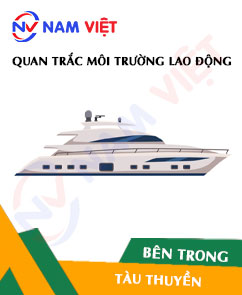

Review Occupational Environment Monitoring at Coal-Fired Thermal Power Factory
There are no reviews yet.